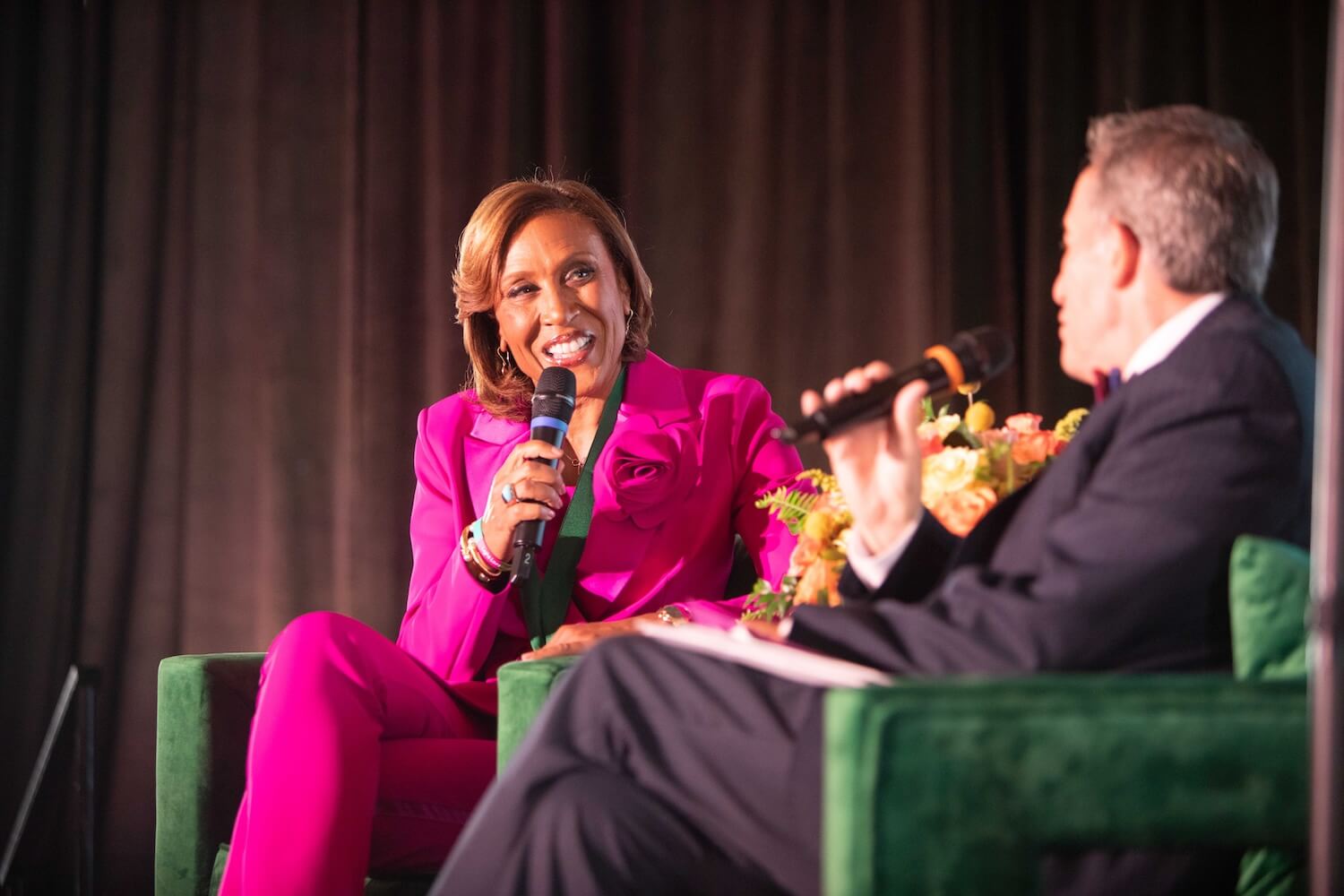Editor’s note: This piece was originally published by the Institute for Justice and Journalism.
The screen showed two tables, one placed horizontally and one vertically. Anyone in the room could see — the vertical piece was longer and thinner. Or was it? Social psychologist Brian Nosek moved one image on top of the other for the journalists. The tables were identical.
Nosek ran through a series of optical illusions at a spring conference at Poynter organized by the University of Southern California Annenberg Institute for Justice and Journalism (IJJ). At the sight of each one, the group of journalists wondered and laughed. Then he showed us a video of men throwing around a basketball and asked us to count the number of passes. Some viewers shouted out six; some were sure they saw nine. But everybody missed the woman who walked right through the middle of the game carrying an open white umbrella.
For a reporter who relies on what she sees, that little illustration of a big mistake was scary. What might I be missing when I go out on a story? Was there a woman with an umbrella whom I might completely overlook? And when Nosek started showing us the tricks our minds play when confronted with race, gender and other social categories, everybody in the room stopped laughing. Instead we started to sweat.
Expressed Attitudes Versus Automatic Reactions
Despite our best intentions, our minds construct expectations about the world and then perceive it accordingly, Nosek told us. We notice different motives, actions or performances based on the biases we’ve accrued, unaware, over time. Nosek, who is a professor at the University of Virginia, studies these perceptual mistakes with colleagues Mahzarin Banaji at Harvard University and Tony Greenwald at the University of Washington. They are trying to understand our underlying assumptions and how they influence behavior. To measure them, they have developed a tool called the “Implicit Association Test.” It times users’ reactions to prompts on a computer screen associated with race, gender, skin tone, religion, sexuality, disability and other characteristics.
The team has studied automatic reactions through more than 5 million Web-based tests so far. About 80 percent of users have shown a preference for young over old. Nearly the same proportion of self-identified white people and Asians have a more favorable impression of white faces relative to black ones. Users also prefer able-bodied people over those with limited physical abilities, straight people over gay and thin people over heavy ones.
Worse yet, according to the team’s research, test results sometimes trumped respondents’ expressed attitudes when the team analyzed judgments, behavior and physiological reactions. Unconscious assumptions especially influenced people’s reactions and decisions in ambiguous situations. Such assumptions took front stage when users weren’t sure what was most important or when they were pressed for time. Sound familiar?
Our automatic reactions often don’t match the conscious attitudes we hold, the researchers have found, and yet we act on them every day. Even though a majority of people explicitly expressed the opposite view, for instance, most test takers implicitly considered Native Americans less “American”� than white citizens. Native Americans themselves, however, strongly disagreed. Asian Americans also fell short of belonging, according to users — even those who were Asian American themselves. The team discovered it was easiest for test-takers to associate harmless objects with white people. And what about black people? With them, users of all races found it easier to associate weapons.
The Journalist’s Challenge
What does all this mean for a journalist? How about, “Question everything you think you see”?
The IJJ fellows had already been talking about covering racial issues for two days. Shaken after Nosek’s presentation, we got together to mull over our revelations and what they might mean for our work. “It bothered me to the point that I wondered what we could do about it,” said Leoneda Inge, the changing-economy reporter at North Carolina Public Radio. Even though Inge makes an extra effort to pay attention to voices often missing on the radio, certain people in Nosek’s examples were invisible to her. “It showed how undoubtedly we’re trained to look for certain things, which means we don’t see others,”� Inge said. “We look at the obvious and keep moving.”
The group started with the reporting and story-framing process. What can each of us do to make sure we see the woman with the umbrella? Some ideas:
- First, question our assumptions. If we’re normal, they’re probably biased. So we might ask ourselves, what didn’t we assume?
- Know our own fault lines. What have our race, class, generation, geographic background and gender taught us that we build into our interpretation of ideas or events?
- Develop a self-correction system by noticing automatic reactions. When you see a woman in a wheelchair on the street, do you avoid eye contact? When you see a young person running, do you assume something different if he is Latino than if he’s white? If you notice an Asian man riding the bus, what kind of job do you assume he has? When you go into an event, whom do you expect to be in charge?
- Check the frame. You probably have an idea of what the story is about. Ask how else you might see it. Try different angles to test whether automatic bias influenced your choice.
- Put yourself in unfamiliar situations and build a library of experience that helps you see beyond stereotypes. Hang out with black executives, gay soldiers or girls who love video games.
- When you’re on deadline or going on gut instinct, turn on your bias alert.
What about the ways our stories are interpreted and understood by audiences? Nosek argues that the news media reinforce and influence the construction of implicit bias. Is there anything we can do about the effects of our stories? The IJJ fellows had some ideas:
- Create a total news environment that covers people in ways that don’t fit their group’s expected social roles.
- Keep the faces and voices diverse in every type of story.
- Force your audience to correct its assumptions. Try to create stories that include both the familiar ideas we hold about people as well as the unexpected. In a story highlighting Latinos’ growing political influence, for instance, talk to immigrants as well as fifth-generation families. Interview American Indians about U.S. politics, health issues or other topics even when you’re not looking for a “native”� angle. In a story about high achievers in math and science, make sure you notice the girls in the classroom as well as the Asian boys.
- Consider the status mix of your sources. Make sure women and people of color don’t just provide “color” and emotion, but also represent power and expert opinion.
Some of these ideas might seem familiar — the usual things we tell ourselves in order to create more complete, accurate news reports. But Nosek’s work tells us that good intentions about doing good journalism aren’t good enough. All the time, our minds make dangerous mistakes. It’s our responsibility to correct them.





